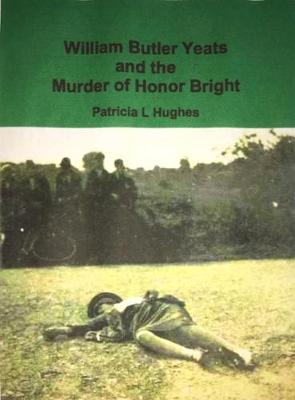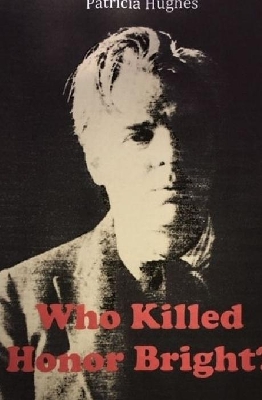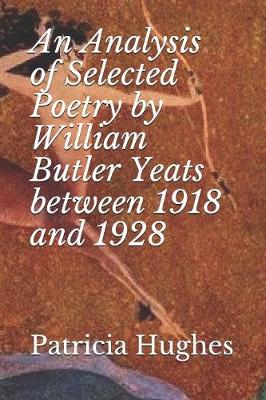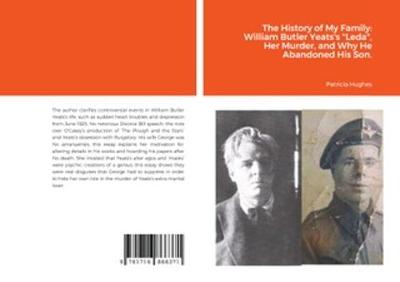William Butler Yeats and Honor Bright
5 primary works • 6 total works
Book 1
Leafing through the Guardian I found a picture of William Butler Yeats receiving his Nobel Prize in 1923. It was a photograph my father used to show me as a child. I always assumed that both men were from a hot country because of their black hair and thick, pale, fast-tanning skin. My father used to avoid Irish people, so I didn't know what they looked like. Suddenly I realised there was a strong, personal resemblance.
Book 2
An Analysis of Selected Poetry by William Butler Yeats between 1918 and 1928
by Patricia Hughes
Published 9 December 2014
The point about poetry, my father used to say, is that you can't pretend. It has to come from the heart, in the same way that a painting reflects your own colours, dictated by your own emotions. It talks about something rational but has to include the warmth of your personal feelings as well as the intensity of rhyme and metre to make it work.
Reading Yeats' poetry systematically for the first time I was looking for a relationship with a young woman, leading to the birth of a son brought up by another woman as her own.
Reading Yeats' poetry systematically for the first time I was looking for a relationship with a young woman, leading to the birth of a son brought up by another woman as her own.
Book 2
William Butler Yeats had an extra-marital lover, Lily O'Neill or Honor Bright, from 1918 to 1925. Garda Superintendent Leopold Dillon murdered her on orders from Kevin O'Higgins, Minister of Justice of the Irish Free State. George, Senator Yeats's wife, reported falsely that Lily was a Republican spy. O'Higgins wanted to restore credence in the Free State, which would otherwise have been reclaimed by the British due to maladministration. Afterwards a bogus trial was concocted outside the court circuit by Chief Superintendent David Neligan, at which Lily was reinvented as a prostitute to conceal Yeats's affair and son, and hide the involvement of Free State officials. On the strength of false evidence the jury unanimously acquitted the assassin after three minutes deliberation.
Book 2
Selections from William Butler Yeats' poetry from 1918 to 1928 revealing his love for 'Leda", a young Catholic 'country wench'. Read how their affair was curtailed by Yeats's wife, George, who falsely convinced the Minster of Justice that she was a Republican spy. The sudden, unexpected termination of Yeats's plans to remarry, and his associated enforced abandonment of his illegitimate son were stifled by the authorities, as his verse shows.
Book 5
This history conference paper explains controversial events in William Butler Yeats's life, such as sudden heart troubles and depression from June 1925, his notorious Divorce Bill speech, the riots over O'Casey's production of 'The Plough and the Stars' in Yeats' Abbey Theatre in February 1926, and his subsequent obsession with Purgatory. His wife George was his amanuensis; this essay explains her motivation for altering details in his works and hoarding his papers after his death. She insisted that Yeats's alter egos and 'masks' were psychic creations of a genius; this essay shows they were real disguises that George had to suppress in order to hide her own role in the murder of Yeats's extra-marital lover.
The essay also explains why my grandmother was murdered, who was responsible, and how the truth was concealed. It explains why my father had a different name in childhood, and why the Garda Siochana strongly urged him to not enquire into his mother's life. It shows why my sisters and I could see from her photograph that she was not a prostitute, and why the jury at the trial of her alleged murderers had such a different point of view.
In 2021 Ancestry.co.uk verified by means of "Thrulines" DNA analysis that the author is the granddaughter of William Butler Yeats, and that her fsther was Yeats' illegitimate son by Lily O'Neill, who changed her name to Honor Bright in 1922, when the Yeats family moved back to Dublin from Oxford, because her life and her son's were being threatened by George Yeats, as revealed in her "automatic writing".
The essay also explains why my grandmother was murdered, who was responsible, and how the truth was concealed. It explains why my father had a different name in childhood, and why the Garda Siochana strongly urged him to not enquire into his mother's life. It shows why my sisters and I could see from her photograph that she was not a prostitute, and why the jury at the trial of her alleged murderers had such a different point of view.
In 2021 Ancestry.co.uk verified by means of "Thrulines" DNA analysis that the author is the granddaughter of William Butler Yeats, and that her fsther was Yeats' illegitimate son by Lily O'Neill, who changed her name to Honor Bright in 1922, when the Yeats family moved back to Dublin from Oxford, because her life and her son's were being threatened by George Yeats, as revealed in her "automatic writing".





